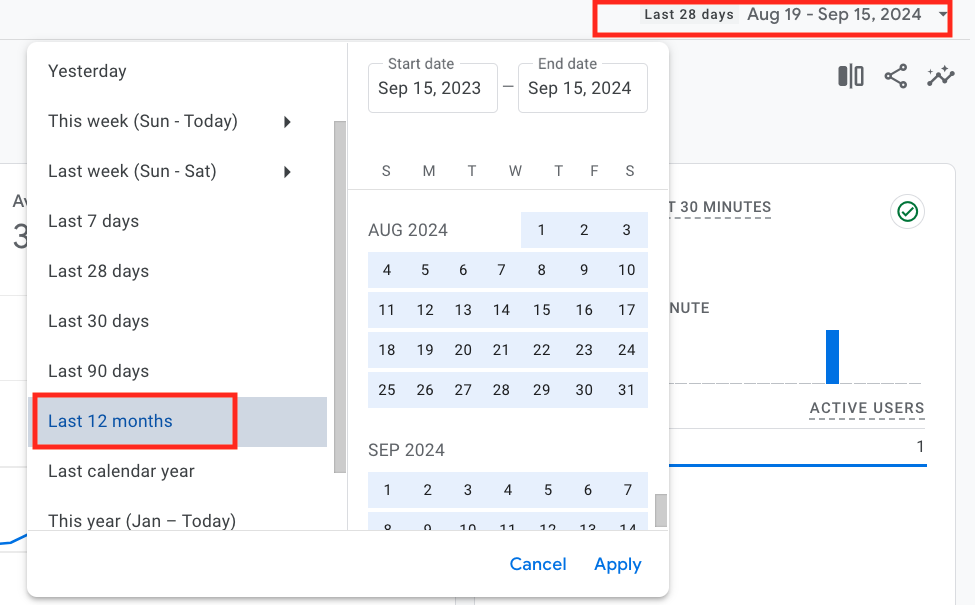
Republishing Content: Update Old Blog Posts For A Traditional and AI-Search Boost
Marketing Directors! Struggling to maintain a consistent content flow with a small marketing team? Here’s a content hack to fill in some slots on your editorial calendar without creating from scratch. You have one of those, right? 🙃
Republishing existing content can be a game-changer for engaging new audiences, enhancing your SEO, and topical authority for AI-search, without the heavy lift of creating from scratch. Here’s a streamlined approach:
How do you determine which content to update?
Keep a content inventory that lists all of your site’s content (yes, every single piece), including PDFs, videos, landing pages, images, articles, etc., with creation dates. This will make it easier to determine what needs an update.
Airtable is an excellent solution for managing a content inventory or using a Google spreadsheet.
An easy way to do this is to sort your inventory by date and review the older content. If the content is important for your brand messaging and more than a couple of years old, that’s generally a good enough reason to update and republish.
If you want to take a more data-driven approach, find out how much organic traffic a landing page brings to your site. Grab about a year’s worth of data from your Google Analytics Reports Dashboard so it will be statistically relevant:


You can filter out campaigns or landing pages your team doesn’t need to analyze.
Look at the top 100 or so landing pages from the past year and see what jumps out at you from a traffic/session standpoint. If a piece of content is getting a lot of traffic, it’s probably a good idea to keep that content fresh.
For example, two articles receive the most traffic in the top 10 landing pages below. You can use the toggles at the top of GA4 to look at specific traffic channels, such as organic traffic and referral traffic.
However, your content inventory tells you this content is from 2013 and 2019.
Well, now you have these two articles that should be at the top of the list for getting into production and updating!
Continue reviewing the data to see what else can go into the update queue.
The articles above also have a high bounce rate. This is another metric to consider when auditing for updates because if people bounce from the page, they aren’t finding what they expected from their search. Consider what you can add to make it more relevant for your audience.
What To Analyze Once You Have Your List
Check Keywords
If the content receives a lot of traffic, it is likely SEO-optimized. Check to see what the keyword for the post is in your content management system or content inventory.
If you have completed on-page SEO services, you will have a focus keyword for that page.
Google the exact focus keyword and analyze the first page of organic results. In the example below, the keyword for one of the pieces of content we queued to update was [hashtag etiquette]

Check Word Count and Backlinks of Competitor Content
Take note of how many words the competing content has and what dynamic content types are included—videos, infographics, etc.,—if any. It’s also a good idea to check how many backlinks the content has so you know how realistic it would be to rank above them based on this off-page SEO factor. A good free tool to check backlinks is https://majestic.com/backlink-checker, or you can ask your SEO specialist to analyze backlinks and report on the data for you.
How To Bring Your Content Up To Date
When republishing content and bringing content up to date, you should aim to provide the best current available advice. Read some of the top-ranking articles for your keyword, make sure your article covers these areas, and consider adding even more insights or dynamic content, such as videos, graphics, etc., to make your content the most comprehensive along the lines of the 10x content model. It’s a content model for “creating content that is at least ten times better than the next best piece of content available online on that same topic” and, generally, a marketing strategy for building links and ranking number one for a given keyword. Of course, this model might not be practical for every update, but it’s an aspirational example.
Update Research
Make sure your research and data are as up-to-date as possible, and add new data as it becomes available. You want to be the most comprehensive and accurate search result for your important topics to improve your SEO visibility for the topic!
Replace Broken or Outdated Links
Links break all the time. Running a quick audit of the links on the landing page you are updating ensures that you are pointing to available resources that are up to date and provide a good user experience. It’s also a best SEO practice that whenever you publish a new blog post, you should go back to 2-3 other relevant blog posts and include an internal link to this “new” one with keyword anchor text. This distributes page authority across your website, boosting overall domain authority.
Update Visuals
When republishing content, don’t forget to update visuals like images, videos, infographics, as these can become outdated too. Create fresh graphics to go along with your updated copy.
Check On-Page SEO
Before you go live with your refreshed content, let your SEO Specialist determine if the keywords need to be updated to be more relevant. A keyword or phrase that was popular twelve months ago might not receive the same amount of search volume today. Therefore, it’s important to re-optimize your content for new keywords every now and then. This will improve search rankings for focus keywords.
Consider Adding a New Call To Action (CTA)
Analyze whether this content is performing against the CTA you assigned it. Are people dropping off after they read it, or are they staying on the page for a good amount of time, subscribing to the newsletter, or viewing other pages? You probably don’t want to mess with a good thing if they are. If they aren’t, it may be time to try another CTA.
Update the Post Date and Republish
Update the post date to today and republish the post using the same URL so the post is at the top of the article feed again.
Re-promote
Don’t just republish it, promote it across social channels and in email again to get it in front of new subscribers and social media followers.
Benefits
- Fills your editorial calendar during busy seasons
- Brings in new users who have not seen the content before
- Improves bounce rates and overall SEO site metrics
- Helps you build internal/external links


